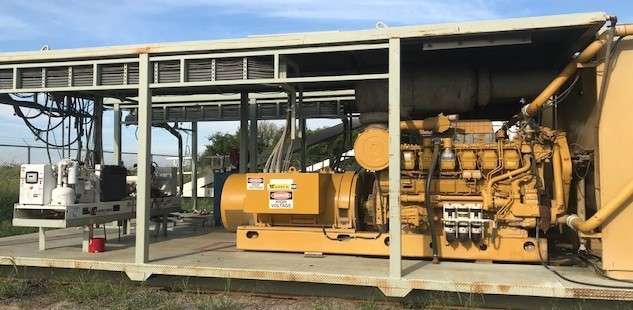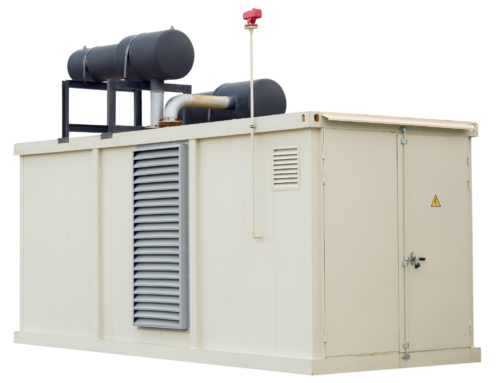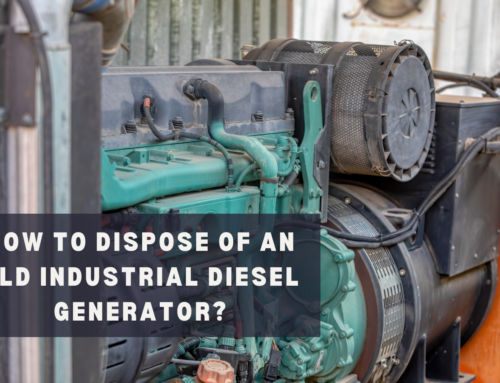One of the most emphasized aspects of diesel engine generators is how to use and maintain them. But what often goes unnoticed and ignored is how to store these generators when they are not in use. Storing your generator properly is also one of the most important practices to follow so that it doesn’t face any untimely corrosion or other similar damaging developments. If your generator is not going to be used for an extended period of time, then it is best to create a proper storage plan before you dump it somewhere in the back of your storage room.
Table of Contents
Portable Generator Storage Tips for Maximum Shelf Life
Before storing your propane generator, you must make sure that the entire unit is cleaned properly, it is dry, well-ventilated, and the lubricating oil is in a good condition. If not, then it should be replaced. You should also inspect the water tank and see if there are any signs of corrosion. Firstly, the water tank should be emptied completely, and if possible, conduct a rust prevention test for the unit.
Short Term Storage of Portable Generators
When storing an automatic generator for a short period of time, follow these steps:
- The fuel should be completely drained, if not, a properly formulated fuel stabilizer should be added to the fuel tank, so that the carburetor doesn’t get gummed up
- The piston should be turned to the top dead center of the compression
- Store the portable generator indoors and make sure that it is covered with a thick cloth
- Ensure that it is stacked in a dry place
- Avoid storing other inflammable, explosive, and corrosive materials around it
- The crankshaft should be turned on a regular basis
Long Term Storage of Portable Generators
When storing an automatic generator for a long period of time, follow these steps in addition to the ones mentioned above:
- Clean the generator thoroughly using an air compressor
- Fill it with desiccant and cover the generator end with a thick sheet of paper. The air vents should also be covered properly by fastening them with a rope
- Empty the engine oil from the oil filter and air filter
- Then fill each cylinder with 100-200 gm of oil from the exhaust manifold. Follow it by turning the crankshaft multiple times so that the engine oil gets distributed in all parts equally and the piston’s position remains on the top dead center of compression
- Removed the valve cover
- Use dehydrated oil to lubricate the valve structure
- The air filter, exhaust port, fuel tank vent, and smoke vent in case of a low-temperature starting device should be sealed using an oil paper
- Clean the alternator, the engine, coupling port, frame, and other components, tools, and accessories with a detergent
- Make sure to rotate the crankshaft a couple of times every month with the piston’s position on the top dead center of the compression
Proper storage is extremely important for a backup generator, especially when it is being stored for a long period of time. If not stored well or properly maintained, it can have a long-lasting negative impact on the performance of the generator.
Using an antifreeze when starting your engine after a long gap is advisable. This will prevent the parts of the engine and other accessories of the cooling system from cracking due to freezing.
Additionally, it will also prevent the cooling water from corroding the engine body. What proportion of antifreeze you use should be in accordance with the proportion recommended by the manufacturer for best results. Also, the cooling water inside the engine and all other accessories should be drained if you are looking to store your generator for a long period of time.
The generators should also be stored in such a place so that they are not directly exposed to environmental and weather effects like snow, rain, hail, etc. The same applies to the batteries of the Genset.
While storing a diesel engine generator requires careful planning and proper implementation, restarting them after long storage is equally important. Since the generators haven’t been used for a long time, there are certain steps you should follow before using them to avoid any kind of damage. The generator should be thoroughly checked to see if there are any signs of damage due to the cold weather and if any such signs are visible, they should be immediately repaired and rectified before you start using the generator.
Check if the electrical parts are properly oxidized as per the instructions in the owner’s manual, if there are any loose ends in the connecting parts, whether or not the coil of the main generator is dry and whether the body of the engine is clean and dry or not.
If not, then proper measures should be followed before the installation, to rectify these issues so that your generator is able to perform as expected once restarted, and enjoys an extended shelf life.
Frequently Asked Questions About Storing Diesel Engine Generator
Why is it important to store a diesel engine generator properly?
Any machine that is not being used for a long period of time goes through wear and tear and its components turn inefficient if not stored properly. The engine oil, corrosion due to weather effects, and other similar factors can have a negative impact on the engine. This is why it is important to store the diesel generators properly so that they can be used efficiently after storage.
What are the essential steps to follow while storing the generator?
Whether you are storing your diesel engine for a long period of time or short, certain steps should be followed irrespective. Check the engine oil, empty the gas or stabilize it, check for all damaged components and repair them before storing, go for annual maintenance to avoid unnecessary damages, keep the engine and other components dirt-free and clean for best results.
Where do I store the generator to avoid damage?
Place the generator in such a place so that it is not directly exposed to sun, rain, snow, hail, etc. Direct weather exposure can have a damaging impact on its functioning.







Leave A Comment